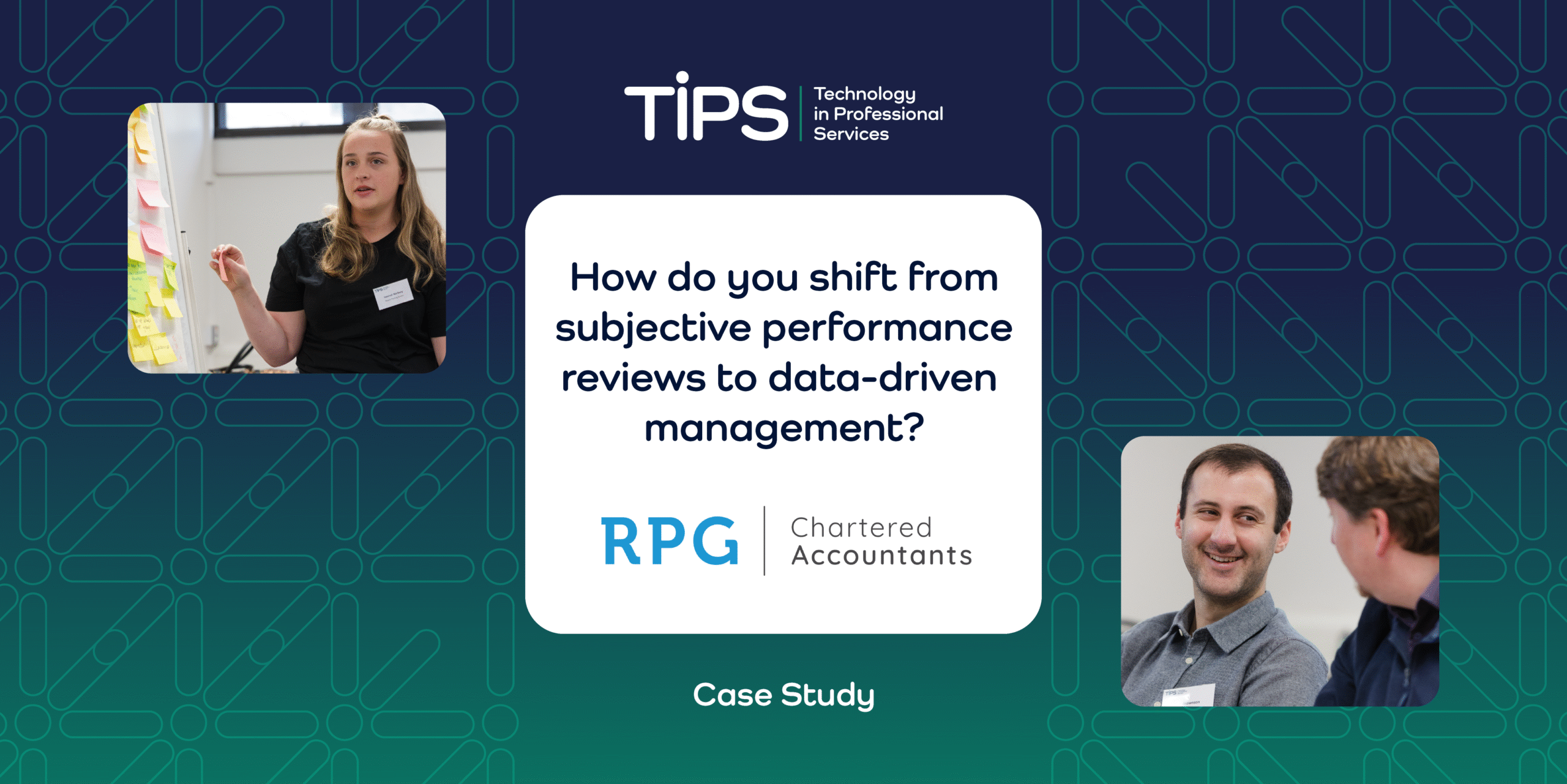RPG Chartered Accountants is a full-service top 100 accountancy practice based in Manchester and a member of DFK International, a global association of accountancy firms and business advisers. There are around 95 fee earners and a team of 10 support staff.
This case study examines a traditional practice undergoing significant digital transformation. The case study presents a realistic view of digital transformation challenges, emphasising the human and cultural elements that are often as important as the technology itself.
The Identified Opportunity
The firm continued to seek opportunities to migrate its technology to Microsoft and cloud-based applications, as part of its pursuit to build solid technological foundations.
The firm operated its resource and engagement planning system via Microsoft Excel spreadsheets, and in some departments, did not have a resource or engagement planning system at all. In addition, the performance management system was driven largely by subjective measures rather than objective data points. Commercial reviews of client engagements and recoveries of overruns were not monitored. The previous approach also created risks when managing compliance deadlines, with no ability to identify the risk of missing HMRC or other regulatory deadlines, or to plan resources to avoid compliance issues. The need for data-driven staff resource management and performance evaluation was thus recognised.
It was recognised that technology could fundamentally change how resource management decisions were made, moving from individual autonomy to systematic allocation and optimisation. However, it was also acknowledged that adopting such an approach represented a cultural shift within the firm that would be hard to achieve.
“What we are trying to achieve is a world in which reward and recognition become clear as day…We want objectivity rather than subjectivity” – Ben Brownson, Group Board Director and Head of Operations
The Solution: Beeye
Beeye is an AI resource and project planning solution for accounting, audit, tax and advisory. Beeye integrates with customers’ existing software to improve capacity planning, collaborative scheduling, including conflict resolution, and real-time engagement, profit forecasting.
Managers use Beeye to identify patterns and trends in staff resource utilisation and make smarter, data-driven decisions on which jobs to assign to which staff members. This frees up billable hours, balances team capacity, uplifts employee and client satisfaction, and boosts margins.
The strategic vision, therefore, focused on the implementation of Beeye as integral to achieving broader organisational goals:
- – Transformation toward project management-centric operations
- – Establishment of objective, data-driven performance management
- – Creation of systematic compliance management processes
- – Development of enhanced collaborative culture.
The Benefits
Systematic Compliance Management:
- – Automated deadline tracking and alerts
- – Project management integration for compliance tasks
- – Performance management consequences for missed deadlines
- – Predictive analytics for compliance risk assessment
Enhanced Client Service:
- – Faster turnaround times through better resource allocation
- – Improved accuracy through systematic processes
- – Enhanced transparency in project status communication
Key Insights
The implementation of Beeye was positioned as integral to achieving broader organisational goals. By aligning the adoption of Beeye with the organisation’s goals, the reason for the adoption project was clear and the benefits of using the technology in terms of delivering the firm’s strategy motivated engagement with the project.
The firm demonstrated understanding of why Beeye was the right solution, with alignment between pain points and what the technology could help deliver to address resource allocation inefficiencies, the lack of accountability in deadline management, subjective performance evaluations and inequitable workload distribution.
Watch the video case study below:

